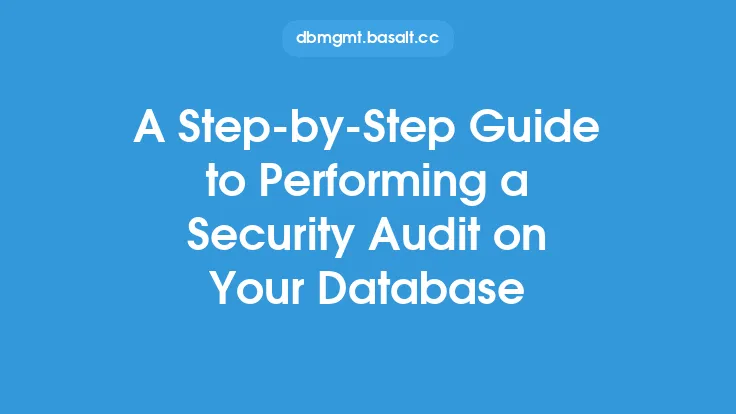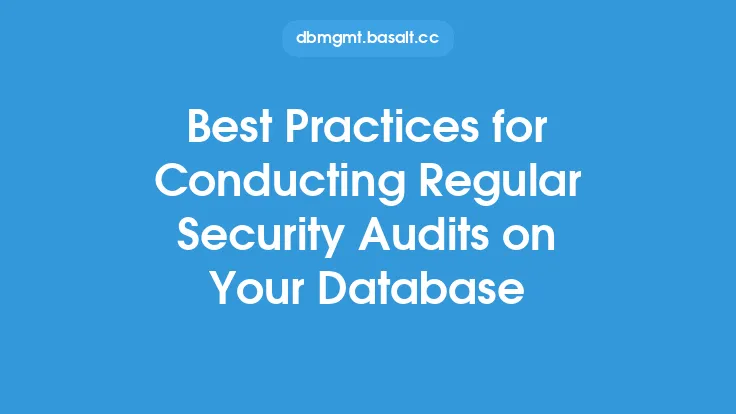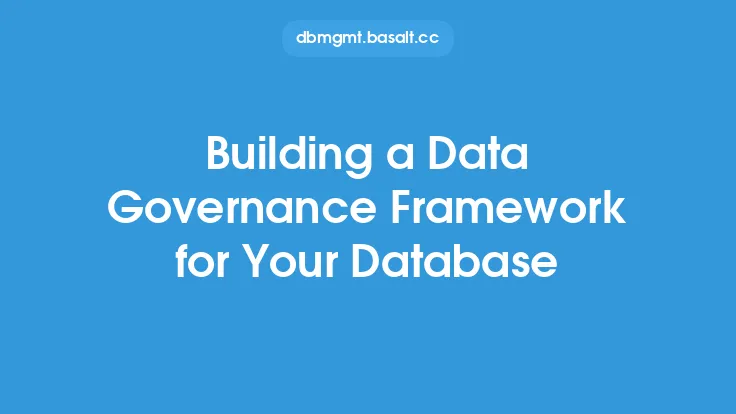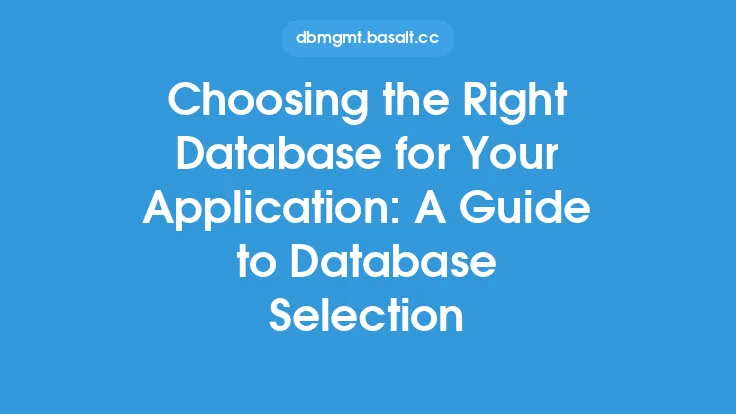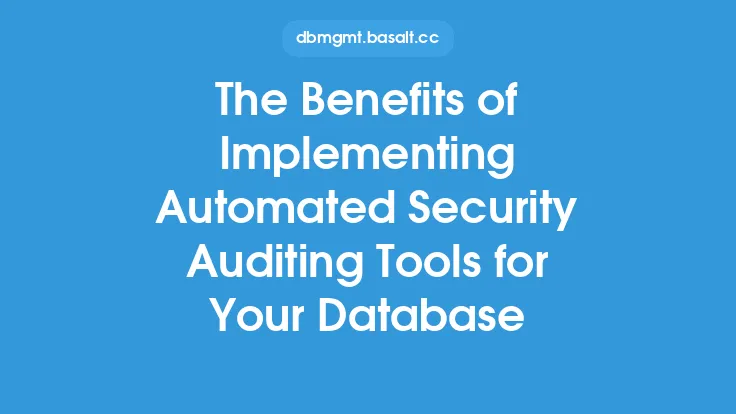Developing a comprehensive security audit plan for your database is a crucial step in ensuring the integrity, confidentiality, and availability of your data. A well-structured plan helps identify vulnerabilities, detects potential threats, and provides recommendations for remediation. In this article, we will delve into the key components of a comprehensive security audit plan, the steps involved in creating one, and the best practices to follow.
Introduction to Security Audit Planning
A security audit plan is a detailed document that outlines the scope, objectives, and methodology of the audit. It serves as a roadmap for the audit team, ensuring that all aspects of the database are thoroughly examined. The plan should be tailored to the specific needs of the organization, taking into account the type of data stored, the database management system used, and the regulatory requirements that apply. A comprehensive security audit plan should include the following elements: scope, objectives, timeline, resources, and deliverables.
Identifying the Scope of the Audit
The scope of the audit defines what aspects of the database will be examined. This includes the database management system, operating system, network infrastructure, and applications that interact with the database. The scope should also consider the types of data stored, such as sensitive personal data, financial information, or intellectual property. Identifying the scope of the audit helps ensure that all potential vulnerabilities are addressed and that the audit is focused on the most critical areas.
Defining the Objectives of the Audit
The objectives of the audit outline what the audit team aims to achieve. Common objectives include identifying vulnerabilities, detecting unauthorized access, evaluating compliance with regulatory requirements, and assessing the overall security posture of the database. The objectives should be specific, measurable, achievable, relevant, and time-bound (SMART) to ensure that the audit is focused and effective.
Creating a Timeline and Resource Plan
A timeline and resource plan are essential components of a comprehensive security audit plan. The timeline outlines the schedule for the audit, including the start and end dates, milestones, and deadlines. The resource plan identifies the personnel, equipment, and budget required to complete the audit. This includes the audit team, their roles and responsibilities, and the tools and techniques that will be used.
Conducting a Risk Assessment
A risk assessment is a critical step in developing a comprehensive security audit plan. It involves identifying potential threats, vulnerabilities, and risks associated with the database. The risk assessment should consider factors such as data sensitivity, system complexity, and user access. The output of the risk assessment will help prioritize the audit activities and focus on the most critical areas.
Selecting Audit Tools and Techniques
The selection of audit tools and techniques depends on the scope, objectives, and risk assessment of the audit. Common audit tools include vulnerability scanners, penetration testing tools, and database auditing software. The audit team should also consider using manual techniques, such as interviews, observations, and reviews of documentation. The selected tools and techniques should be appropriate for the type of database and the level of risk involved.
Developing a Testing Strategy
A testing strategy outlines the approach and methodology for testing the database. This includes the types of tests to be performed, such as vulnerability scans, penetration tests, and compliance checks. The testing strategy should also consider the testing environment, including the hardware, software, and network infrastructure. The goal of the testing strategy is to simulate real-world attacks and identify potential vulnerabilities.
Implementing a Remediation Plan
A remediation plan outlines the steps to be taken to address the vulnerabilities and risks identified during the audit. The plan should prioritize the remediation activities based on the level of risk and the potential impact on the database. The remediation plan should also include a timeline for implementation, resources required, and responsibilities assigned to each team member.
Maintaining and Updating the Audit Plan
A comprehensive security audit plan is not a one-time activity; it requires ongoing maintenance and updates. The plan should be reviewed and updated regularly to reflect changes in the database, new vulnerabilities, and evolving regulatory requirements. The audit team should also conduct regular audits to ensure that the remediation activities are effective and that the database remains secure.
Best Practices for Security Audit Planning
To ensure the effectiveness of the security audit plan, the following best practices should be followed:
- Involve stakeholders from various departments, including IT, security, and compliance.
- Use a risk-based approach to prioritize audit activities.
- Select audit tools and techniques that are appropriate for the type of database and level of risk.
- Develop a comprehensive testing strategy that simulates real-world attacks.
- Implement a remediation plan that prioritizes activities based on risk and potential impact.
- Maintain and update the audit plan regularly to reflect changes in the database and regulatory requirements.
Common Challenges and Pitfalls
Developing a comprehensive security audit plan can be challenging, and several pitfalls should be avoided. These include:
- Insufficient scope, resulting in overlooked vulnerabilities.
- Inadequate resources, leading to incomplete or inaccurate audit results.
- Ineffective testing strategies, failing to simulate real-world attacks.
- Inadequate remediation plans, resulting in unaddressed vulnerabilities.
- Lack of maintenance and updates, leading to outdated and ineffective audit plans.
Conclusion
Developing a comprehensive security audit plan is a critical step in ensuring the security and integrity of your database. By following the steps outlined in this article, you can create a plan that identifies vulnerabilities, detects potential threats, and provides recommendations for remediation. Remember to maintain and update the plan regularly to reflect changes in the database and regulatory requirements. With a well-structured security audit plan, you can protect your data and ensure the continuity of your business operations.
